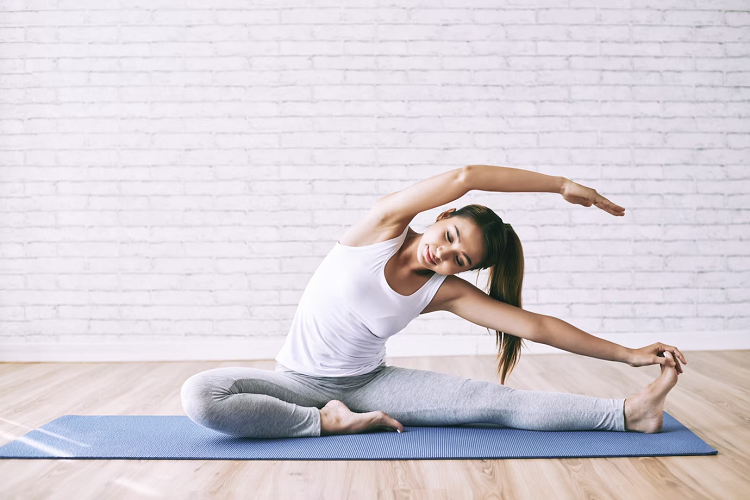Stretching is an important part of any physical activity and exercise routine, as it helps to increase flexibility and range of motion. However, there are two main types of stretching: static and dynamic.
Both have pros and cons, which should be considered when deciding which type of stretch to incorporate into your workout regimen. This article will look at the differences between static and dynamic stretching and the potential benefits and drawbacks.
By understanding both forms of stretching in greater detail, you can make a more informed decision about which option best suits your needs.
The Difference Between Static and Dynamic Stretching
Exercise enthusiasts may have heard of the terms’ static stretching’ and ‘dynamic stretching’ but are unsure what makes them different. Static stretching involves slowly stretching muscles to the point of mild discomfort and then holding that position for 10-to-30 seconds at a time, whereas, with dynamic stretching, the body is moved through its full range of motion rather than holding any particular position.
While both forms of stretching can yield many positive results in improved flexibility, muscle memory, and muscular response, static stretching should be done after exercising as it may reduce performance beforehand if used as a warm-up activity. Conversely, dynamic stretching before physical activity can serve as an effective replacement for static stretches when it comes to preventing injury.
Comparing the Benefits of Each Type of Stretch
Both static and dynamic stretching exercises have benefits, but each should be utilized in the right context.
Static stretching provides a more gentle stretch that can help to improve overall flexibility, reduce muscle tension, and increase joint range of motion over time. It is also beneficial for relieving stress, as holding a static stretch for 10-to-30 seconds can help to relax the body and mind.
Dynamic stretching is useful for activating muscles before physical activity as it helps to increase core temperature and stimulate neural pathways, thus increasing muscular efficiency. It also encourages a greater range of motion by allowing for more active movement within the full range of motion. Additionally, it may be combined with static stretching exercises to increase the intensity of the stretching routine.
The Potential Downsides to Static and Dynamic Stretching
Although both static and dynamic stretching can be beneficial, there are potential downsides that should also be considered. For example, with static stretching, overstretching can occur if the stretch is held for too long or the position of the stretch is pushed beyond its natural range of motion. This could lead to pulled muscles and other injuries if not done correctly.
Dynamic stretching can also cause injury if not done properly or if the stretch is too intense for the muscles involved. Additionally, it should be done with caution, as explosive movements may increase the risk of joint and muscle damage.
Which Option is Right for You – Pros and Cons Considerations
There are many considerations when considering the choices between static and dynamic stretching. Static stretching is a great way to help with flexibility, as it reduces the overall stiffness of muscles and joints. However, warm-ups before activity are often recommended to reduce the risk of injury from beginner’s strain or other causes.
On the other hand, dynamic stretching is beneficial for activating your muscles in preparation for activity. This may include taking part in quick movements such as walking lunges or running on the spot – they are fantastic for getting your body ready for physical exertion and releasing tension through movement.
Both methods have unique benefits and drawbacks; they deal with what works best for you. Consider your choice carefully to ensure that you get maximum advantage from your stretching routine.
Making an Informed Choice About Your Exercise Routine
It is important to understand the differences between static and dynamic stretching to make an informed choice regarding exercise. By considering your personal preferences, activity level, and physical limitations, you can choose the form of stretching that best suits your routine.
Whichever option you choose, ensure that you are comfortable with the exercises and warm up thoroughly before engaging in physical activity. This will help reduce the risk of injuries and ensure that you can make the most of your exercise routine.




